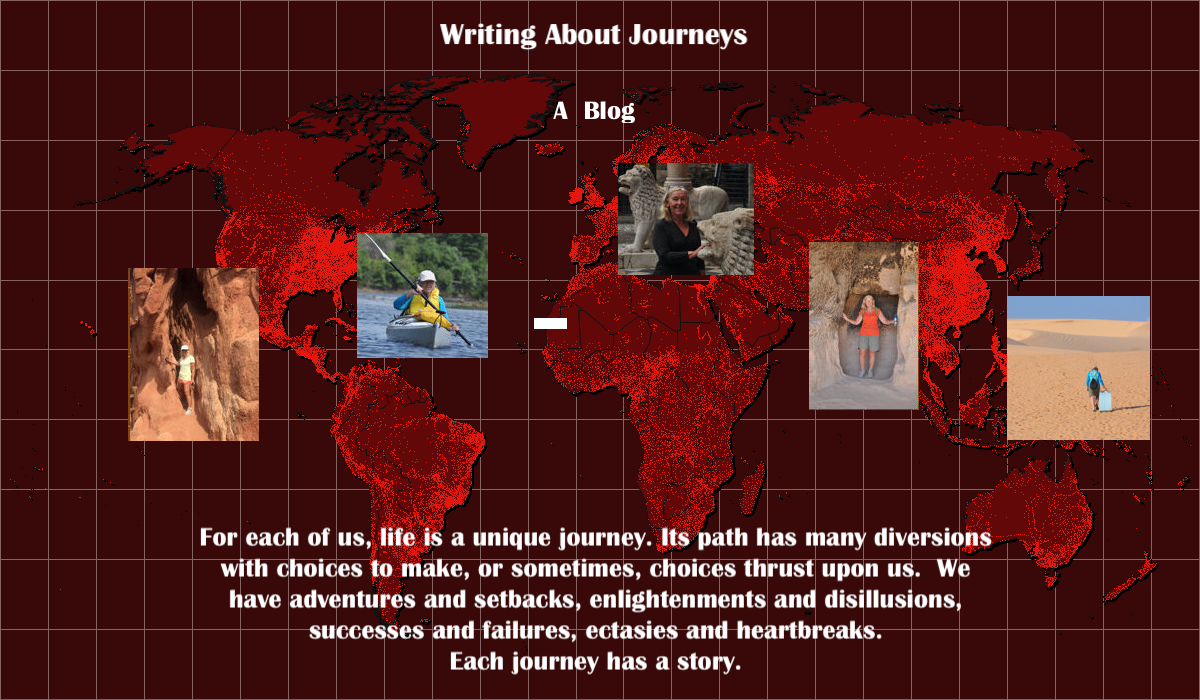“In books I have traveled, not only to other worlds, but into my own.”
Anna Quindlen
Non-fiction travel books have their place and are great for learning about sights to see, but novels have the ability to immerse you in the ethos of a culture.—the next best thing to being there in person. A book series set in one area adds layers to understanding the character and spirit of the place. Here are some authors who have written series that transport the reader and which I’ve enjoyed. (Many, but not all are mysteries—but then, as a mystery writer I often gravitate toward them.) I’ve broken them down into location:
Canada
Louise Penny – Chief Inspector Gamache series set in Quebec (17 books) from Still Life, 2005 to The Madness of Crowds, 2021
England
Elizabeth George – Inspector Thomas Lynley series (21 books) from A Great Deliverance, 1988 to Something to Hide, releasing in 2022
P.D. James – Adam Dalgliesh series (14 books) from Cover Her Face, 1962 to The Private Patient, 2008
France
Susan Kiernan-Lewis - Maggie Newberry series set mostly in the South of France (19 books) from Murder in the South of France, 2010 to Murder in Mont St-Michel, 2021
An American in Paris series (7 books) from DéjàDead, (2019) to Murder Flambé, 2021
John Pearce – Eddie Grant series set in Paris (3 books) from Treasure of Saint Lazare, 2012 , to Finding Pegasus, 2018
Mark Pryor - Hugo Marston series set in Paris, (9 books) from The Bookseller, 2012 to The French Widow, 2020
Martin Walker - Bruno, Chief of Police series set in the South of France (14 books) from Bruno Chief of Police, 2009 to The Coldest Case, 2021
Fiona Valpy – The French for… series from The French for Love, 2013 to The French for Always and The French for Christmas, 2014)
Greece
Jeffrey Siger - Chief Inspector Andreas Kaldis series (11 books) from Murder in Mykonos, 2008 to A Deadly Twist, 2020
Ireland
Tana French – Dublin Murder Squad series (6 books) from In the Woods, 2007 to The Trespasser 2016
Italy
Andrea Camilleri - Inspector Montalbano series set in Sicily (30 books) from The Shape f Water, 1994 to Riccardino,2021
Maurizio de Giovanni – Commissario Ricciardi series set in Naples (9 books) from I Will Have Vengeance, 2007 to Nameless Serenade, 2016
The Bastards of Pizzofalcone series set in Naples (4 books) from The Bastards of Pizzofalcone, 2013 to Puppies, 2015
Elena Ferrante – Neapolitan Novels series (4 books) from My Brilliant Friend, 2012 to The Story of the Lost Child, 2015
Donna Leon – Commissario Guido Brunetti crime novels set in Venice (30 books) from Death at La Fenice, 1992 to Transient Desires 2021
Gabriel Valjan - Roma Series (5 books + prequel) from Roma Underground, 2012 to Corporate Citizen, 2016
David P. Wagner – Rick Montoya Italian Mysteries series (7 books) from Cold Tuscan Stone, 2013 to To Die in Tuscany, 2021
Scotland
Ian Rankin – Rebus series (28 books) from Knots and Crosses, 1987 to A Song for the Dark Times. 2020
Sweden
Viveca Sten – Sandhamm Murders series (10 books) from Still Waters, 2008 to Buried in Secret, releasing in 2022
United States
Lucy Burdette - Key West Food Critic Series set in Key West, Florida (11 books) from An Appetite for Murder, 2012 to A Scone of Contention, 2021
Dorothea Benton Frank – Low Country Novels set in South Carolina (20 books) from Sullivan’s Island, 1999 to Queen Bee, 2019
Edith Maxwell/Maddie Day - Country Store Mysteries set in Indiana (7 books) from Flipped for Murder, 2015 to Nacho Average Murder, 2020
Cozy Capers Book Group Mysteries set in Cape Cod, Massachusetts (3 books) from Murder on Cape Cod to Murder at the Lobstah Shack, 2021
Local Foods Mysteries set in Massachusetts (5 books) from A Tine to Live, A Tine to Die, reprinted in 2014 to Mulch Ado About Murder, 2017
Anne Rivers Siddons – Southern Novels set in Georgia and the Carolinas (19 books) from Heartbreak Hotel, 1976 to The Girls of August, 2014
Joanna Campbell Slan – Cara Mia Delgatto Mystery Series set in Stuart, Florida (6 books) from Tear Down and Die, 2019 to Sand Trapped, 2021
Tom Turner -Charlie Crawford Palm Beach Mysteries series set in Florida (10 books) from Palm Beach Nasty, 2016 to Palm Beach Taboo, 2021
There are also authors who write one book or a group of stand-alone books that convey much about a place. Again, I list them by location:
Afghanistan
Khaled Hosseini – The Kite Runner, 2004, A Thousand Splendid Suns, 2008
Asne Seierstad – The Bookseller of Kabul, 2003
China
John Hersey – A Single Pebble, 1956
Ha Jin – Waiting, 1999, Nanjing Requiem, 2011
Egypt
Naguib Mafouz –(1988 Nobel Prize for Literature) – Cairo Modern, 1945 in Arabic, 2008 in English, The Cairo Trilogy, 1990s English
England
Monica Ali (Bangladeshi immigrant in London)– Brick Lane, 2003, In the Kitchen, 2009
France
Fiona Valpy (The Beekeeper’s Promise and Sea of Memories, 2018 and The Dressmaker’s Gift, 2019)
Iran
Azar Nafisi - Reading Lolita in Tehran, 2003
Ireland
Eoin Dempsey – The Bogside Boys, 2015
Italy
Lorenzo Carcaterra - Street Boys, 2002, and Paradise City, 2004, set in Naples,, Midnight Angels, 2010, set in Florence, Three Dreamers, 2021, set in Ischia
Turkey
Ayse Kulin – Last Train to Istanbul, 2013, Rose of Sarajevo, 2014, Love in Exile, 2016, Without a Country, 2018
Orhan Pamuk – (2006 Nobel Prize for Literature) My Name is Red, 1998, Snow, 2004, The Museum of Innocence, 2008





















